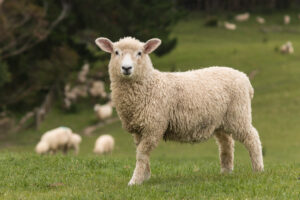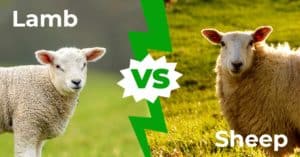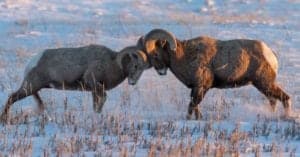How much do you know about sheep, including the average sheep lifespan? Sheep are more fascinating than you may have initially thought. It is a common misconception that sheep are dumb when the phrase “sheepish” is used to describe people who blindly follow others.
Sheep have several really fascinating qualities. For example, did you know that their fleece grows indefinitely?
If you’re ready to unlearn your misunderstandings about sheep, you’ve come to the right place. You’ll learn all about the average sheep life span, their life cycle stages, and other fun and fascinating facts!
How Long Do Sheep Live?

.
©Vasilyev Alexandr/Shutterstock.com
What’s a sheep life span? The average lifespan of a sheep is 10-12 years. However, some sheep have been recorded to live as long as 20 years of age. Some breeds, like Merino, are recognized for their longevity. The oldest sheep survived to reach 23, according to the Guinness Book of World Records. She was a Merino sheep.
A sheep’s age can be calculated by looking at its front teeth in the first few years of life. After each set of milk teeth is replaced by a bigger adult tooth, the complete set of eight adult front teeth is present around the age of four.
The front teeth are then gradually lost as sheep age, making it difficult for them to eat and jeopardizing the animal’s health and production. As a result, the health of domestic sheep in typical pastures begins to deteriorate gradually after four years. This is why sheep do not live for many years after this.
When compared to other livestock, like cows and alpacas, which can live up to twenty years, sheep have a much shorter lifespan. Now that we have a better understanding of the sheep’s lifespan, let’s look at how they develop from infants to complete adults.
Sheep Lifespan and Background Explained
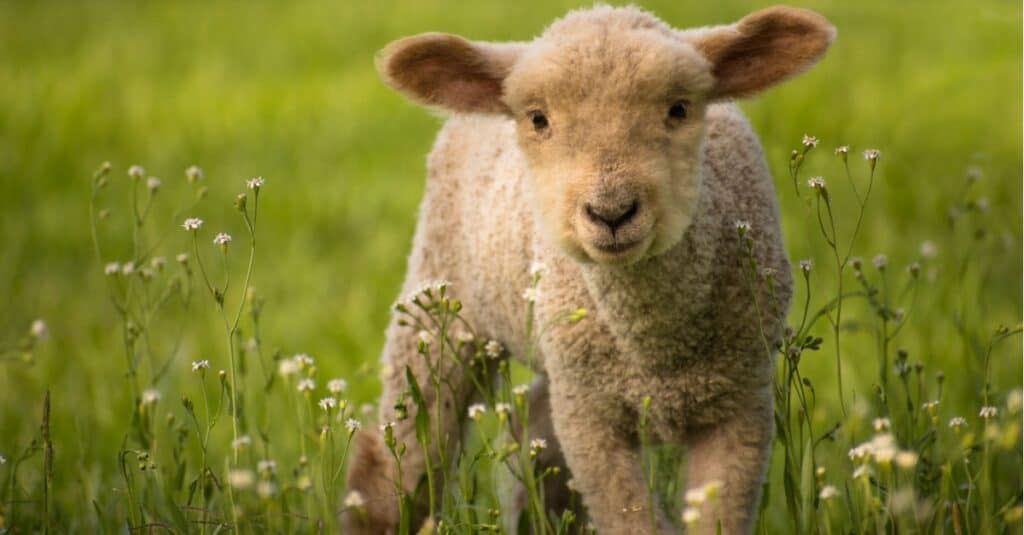
A sheep’s age can be calculated by looking at its front teeth in the first few years of life.
©iStock.com/Sebastian Jakimczuk
The sheep, also known scientifically as Ovis aries, was one of the earliest animal species domesticated by humans for agricultural purposes. Domestic sheep are the most abundant species of sheep, with a population of little more than one billion.
Herds of sheep were most likely descended from European and Asian wild sheep, with Iran serving as a geographical boundary for their core domestication.
Sheep, contrary to common assumptions, are highly intelligent creatures capable of problem-solving. They are said to have a similar IQ to cattle and are nearly as intelligent as pigs. Sheep, like many other species, including humans, use a variety of vocalizations to express distinct emotions. They can also convey and recognize emotion through facial expressions.
Sheep have a deeply ingrained presence in human culture as a major animal in the history of farming and are represented in many modern languages and symbols. Sheep were considered sacred by the Egyptians. When they died, they were even mummified, much like humans.
Now that we know more about sheep, let’s explore the sheep’s life cycle!
The Average Sheep Life Cycle
You may be thinking of breeding sheep as pasture pets or as a business venture. In any case, you may be wondering what a sheep’s average life cycle is. Let’s go over the various stages of the life stages of a sheep.
Gestation
In sheep, the typical gestation period ranges from 142 to 152 days. The average length of time is 147 days. Most sheep are seasonal breeders, while others may breed all year. Although certain breeds produce bigger litters of lambs on a regular basis, the majority deliver single or twin lambs. During or shortly after labor, ewes and lambs may be confined to tiny lambing jugs. These are small enclosures meant to allow for thorough observation of the ewes as well as to strengthen the relationship between them and their offspring.
Lambs
A newborn sheep, also called a lamb, will frequently attempt to stand and walk within minutes of birth. This is also when the lamb starts suckling from its mother’s first milk, known as colostrum. Colostrum contains a lot of vitamins, lipids, and carbs. It also helps to keep infections at bay and cleanses the digestive tract. Lambs should nurse as frequently as possible within the first 10 days of life, while some lambs are unable to nurse and must be fed on a bottle.
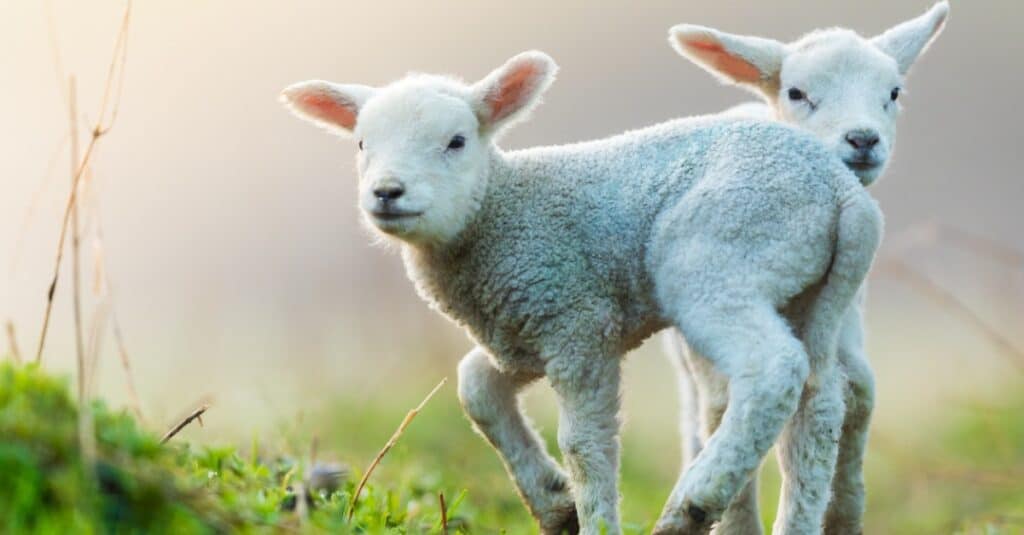
When compared to other livestock, like cows and alpacas, which can live up to twenty years, sheep have a much shorter lifespan.
©iStock.com/Jag_cz
Hoggets
Weaning, or the shift of a lamb’s diet from mother’s milk to solid food, can occur at any time between the ages of five and fourteen weeks. Lambs can remain with their mothers until they are around five months old. They are known as weaners during this period, and they begin eating hay, grass, or grain. Hoggets are lambs that are older than weaners but not quite adults. They are similar to adolescents or teens in that they must continue to progress and become independent of their mothers.
Adulthood
Ewes (female sheep) generally reach sexual maturity at six to eight months old, and rams (male sheep) generally at four to six months. Sheep are considered fully developed adults when they reach one year.
What Factors Impact The Sheep Lifespan?
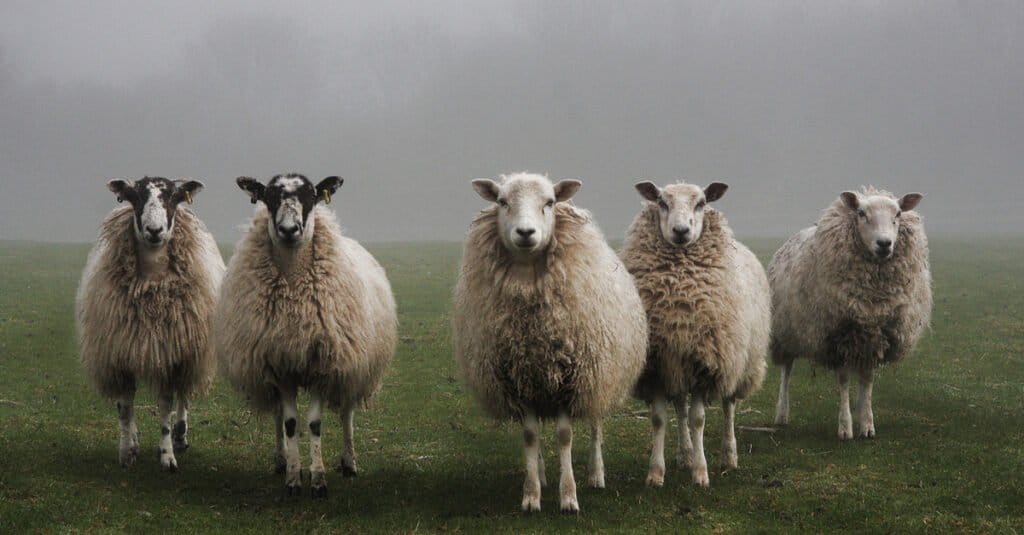
Sheep are considered fully developed adults when they reach one year.
©Paul Steven/Shutterstock.com
Many subspecies of wild sheep are considered endangered because of predation, habitat degradation, and poaching. However, most sheep today are domesticated. This means that they have far fewer factors to worry about. Still, no domesticated sheep’s lifespan is ever fully guaranteed to be a long one.
Some of the factors that impact their lifespan include:
- Poor nutrition: A sheep’s major diet consists of various sorts of grasses in both dry forms, such as hay and natural forms, such as pasture grasses. Sheep that are not given enough grasses or are overfed toxic grasses such as alfalfa hay and grains are more likely to develop health problems such as obesity and bladder stones.
- Adequate pasture space: Sheep that are not given enough housing space are more likely to suffer illnesses caused by poor care or infectious diseases that spread quickly across the herd. Sheep that are not given adequate pasture space may not receive enough to eat or may become unwell, just as they might in tight quarter shelters.
The photo featured at the top of this post is © N-sky/Shutterstock.com
Thank you for reading! Have some feedback for us? Contact the AZ Animals editorial team.




